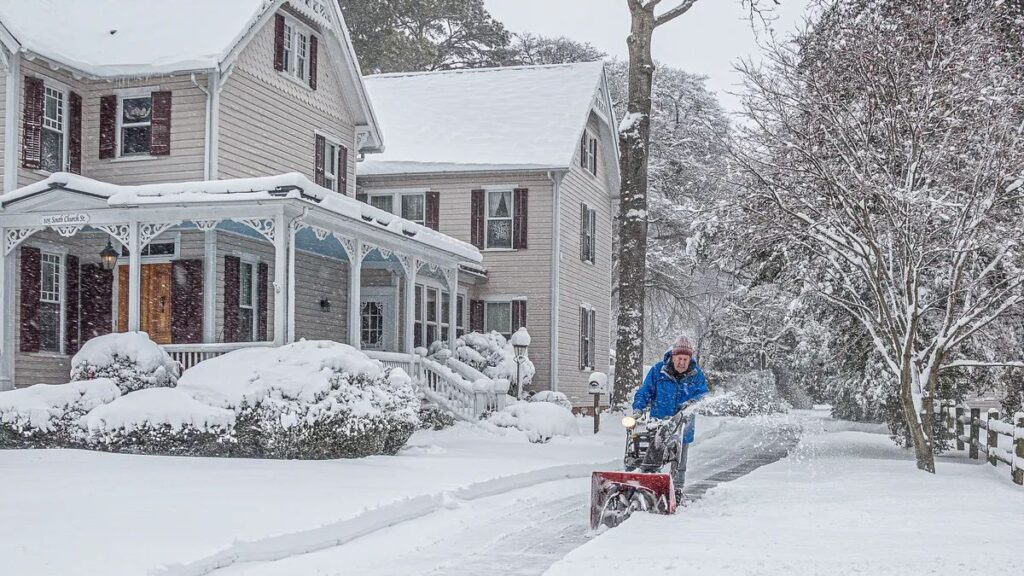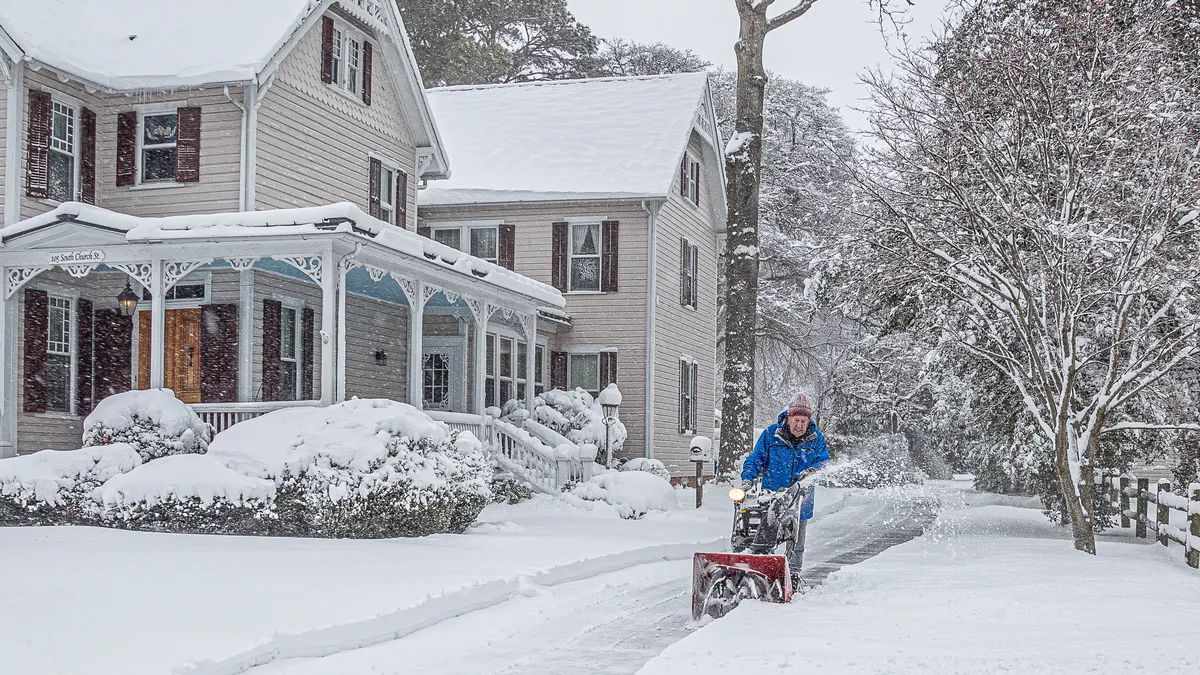Yes, it does snow in Maryland. The state’s diverse climate allows for varying amounts of snow across different regions. The western part of Maryland, including areas like Deep Creek Lake and Garrett County, tends to receive more snow due to its proximity to the Appalachian Mountains. On the other hand, the eastern shore and coastal areas usually experience less snowfall.
The average temperature in Maryland during the winter months typically ranges from around 30 to 40 degrees Fahrenheit. However, it is important to note that temperatures can vary depending on the specific location within the state and the weather patterns of a particular year.

In some parts of western Maryland, where higher elevations are present, temperatures can be colder, occasionally dipping below freezing. Along the coastal areas, temperatures may be slightly milder due to the moderating influence of the Atlantic Ocean.
Maryland experiences various weather patterns throughout the year. One of the key questions often asked by residents and visitors alike is, “Does it snow in Maryland?” Let’s explore this topic and shed light on the snowy conditions in the state.
Location Overview
Maryland is a state located in the Mid-Atlantic region of the United States. Several neighboring states, including Pennsylvania, border it to the north, Delaware and the Atlantic Ocean to the east. While West Virginia and Virginia to the south, and Washington, D.C. to the west.
Here’s an overview of some key aspects of Maryland’s geography and notable features:
- Chesapeake Bay
Maryland is known for its extensive coastline along the Chesapeake Bay, the largest estuary in the United States. The bay provides numerous recreational opportunities, including boating, fishing, and crabbing, and it has a significant impact on the state’s culture and economy.
- Diverse Landscapes
Maryland’s geography is quite diverse. The state encompasses a variety of landscapes, including the Appalachian Mountains in the west, the Piedmont Plateau region in the central part of the state, and the coastal plain in the east.
This diversity offers residents and visitors opportunities for outdoor activities such as hiking, camping, and exploring natural areas.
- Major Cities
Maryland is home to several significant cities. Baltimore, the largest city in the state, is known for its vibrant waterfront, historical sites, and cultural attractions. Annapolis, the capital of Maryland, is renowned for its charming historic district. Other notable cities include Frederick, Rockville, and Gaithersburg.
- National Parks and Recreation Areas
Maryland boasts several national parks and recreation areas that showcase its natural beauty. Assateague Island National Seashore, located along the coast, is famous for its wild horses and pristine beaches.
Catoctin Mountain Park in the northwestern part of the state offers scenic trails and camping opportunities. Additionally, Antietam National Battlefield preserves a significant Civil War site.
- Historic Sites
Maryland has a rich history, and there are numerous historic sites throughout the state. Visitors can explore places like Fort McHenry. The Historic St. Mary’s City is a living history museum that recreates a colonial settlement.
Geography and Climate of Maryland
Maryland’s climate and geography are influenced by its location in the Mid-Atlantic region of the United States and its proximity to the Chesapeake Bay and Atlantic Ocean. Here’s an overview of the state’s climate and geography:
- Climate
Maryland has a humid subtropical climate characterized by hot and humid summers and cool to mild winters. The state experiences four distinct seasons, with significant variations in temperature and precipitation throughout the year.
Summers in Maryland are generally hot and humid, with average temperatures ranging from the mid-70s to the low 90s Fahrenheit. Thunderstorms are common during this season. Autumns in Maryland are mild and pleasant, with temperatures gradually cooling down.
Winters in Maryland are cool, with average temperatures ranging from the mid-30s to mid-40s Fahrenheit. Snowfall occurs, particularly in the western and central regions of the state, but the amount and frequency can vary from year to year. Springs in Maryland are mild and often marked by varying temperatures.
- Geography
Maryland’s geography is diverse and encompasses various landforms and natural features.
The state has a coastline along the Chesapeake Bay and the Atlantic Ocean. The bay’s expansive estuary and its tributaries significantly influence the state’s geography, ecology, and economy.
The combination of Maryland’s coastal areas, mountains, forests, and waterways contributes to its natural beauty and provides a range of outdoor recreational activities. Maryland’s climate and geography offer a diverse and appealing environment.
Historical Snowfall Record
Over the years, Maryland has witnessed notable snowfall events that have left a mark on the state’s snowfall history.
One notable event was in 2010, a severe winter storm known as “Snowmageddon” which dumped heavy snow across the region. The resulting snowfall accumulated up to 40 inches in some areas. This record-breaking event caused significant disruptions and garnered considerable media attention.
Winter Season & Snowfall Pattern
The geographical features play a significant role in shaping Maryland’s climate, including its snowfall. During the winter season, which typically spans from December to February, Maryland experiences cold temperatures that can lead to snowfall.
The severity and frequency of snowstorms vary from year to year. The coastal areas, such as Baltimore and Annapolis, often receive less snow compared to the inland regions, particularly those near the mountains.
Locations To Enjoy Snow In Maryland
Snowfall in Maryland provides an opportunity for residents and visitors to engage in a variety of winter activities. Here are some notable places:
- Deep Creek Lake
Located in Garrett County, Deep Creek Lake is a popular destination for winter enthusiasts. The area receives ample snowfall and offers opportunities for skiing, snowboarding, snowshoeing, and snowmobiling. Wisp Resort, situated near the lake, provides skiing and snowboarding facilities.
- Savage River State Forest
This expansive forest in western Maryland offers a tranquil winter setting. Visitors can enjoy cross-country skiing, snowshoeing, and winter hiking along the forest’s picturesque trails. The Savage River Lodge, nestled within the forest, provides a cozy retreat for winter getaways.
- Rocky Gap State Park
Situated near Cumberland, Rocky Gap State Park offers scenic beauty and winter recreational activities. Visitors can go ice fishing on Lake Habeeb or enjoy hiking and cross-country skiing on the park’s trails. The park also has a casino and a lodge for overnight stays.
- Herrington Manor State Park
Located in Garrett County, Herrington Manor State Park features a picturesque landscape during winter. Visitors can go ice fishing, cross-country skiing, and snowshoeing on the park’s trails and frozen lake. The park also has cabins available for winter stays.
- Cunningham Falls State Park
Situated in Frederick County, Cunningham Falls State Park provides a serene winter atmosphere. The park’s trails offer opportunities for winter hikes and snow-covered scenery. Visitors can also go sledding on designated slopes when conditions permit.
- Ski Resorts
Maryland has ski resorts that cater to winter sports enthusiasts. Wisp Resort in McHenry offers skiing, snowboarding, snow tubing, and other winter activities. Ski Liberty in Carroll Valley is another popular ski resort with various slopes and amenities.
These locations provide diverse options for enjoying snow and winter activities in Maryland. Whether you are seeking outdoor adventures or a cozy winter retreat, these destinations offer something for everyone to embrace during the snowy season.
Factors Influencing Snowfall
Several factors, including temperature, precipitation intensity, and storm duration, influence snow accumulation in Maryland. When conditions are favorable, significant snowfalls can occur, resulting in several inches of accumulation.
However, it is important to note that snowstorms with substantial accumulations are not as frequent as in some northern states.
Conclusion
While Maryland does experience snowfall during the winter season, the frequency and severity of snowstorms can vary from year to year. The state’s diverse geography contributes to different snowfall patterns across its regions.
Whether you enjoy the beauty of snow-covered landscapes or prefer warmer climates, Maryland offers a mix of weather conditions throughout the year.
